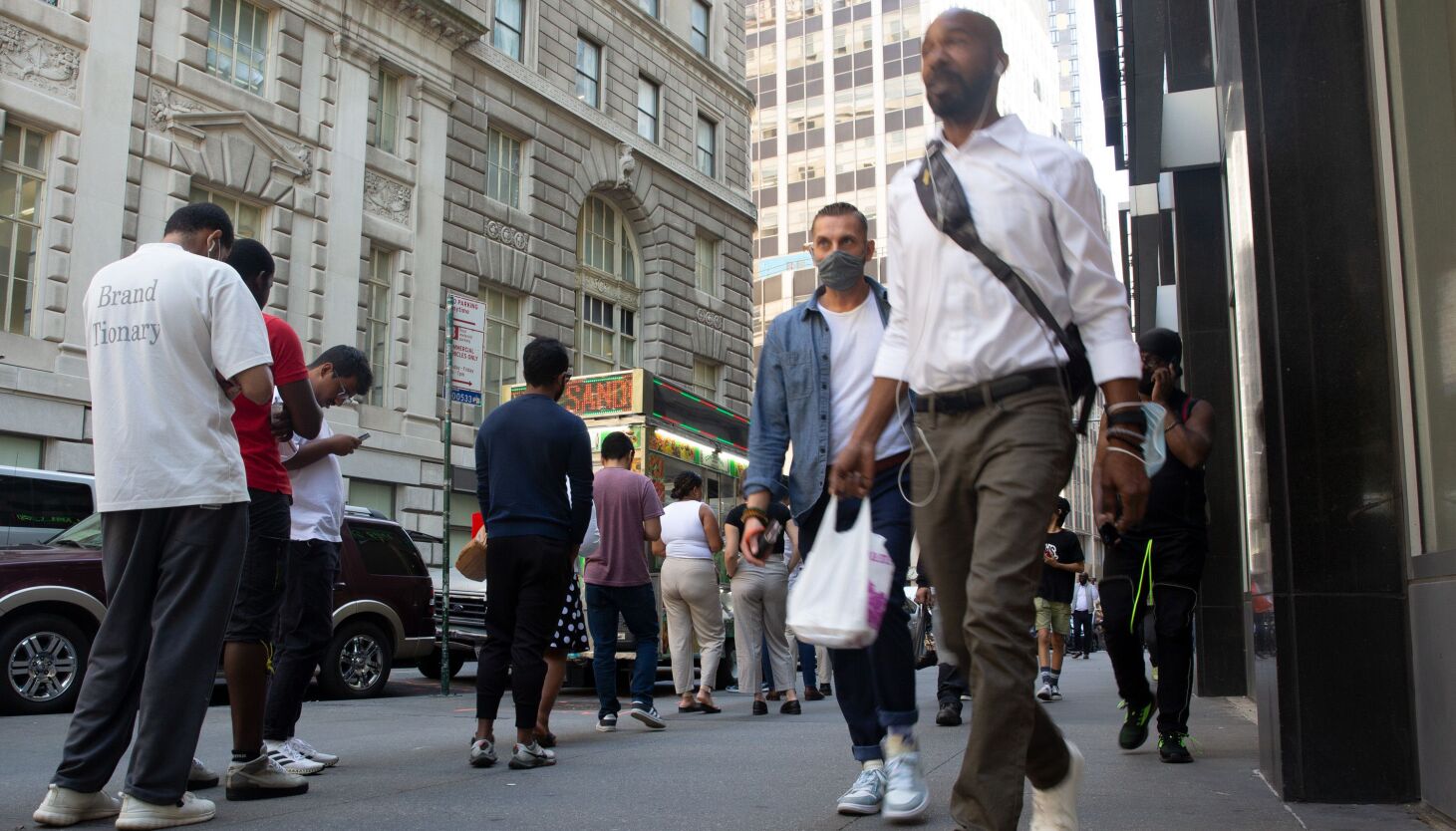Even as workers begin returning to the office in droves after the summer slump, Mayor Eric Adams acknowledges that hybrid work arrangements will likely continue — and the city’s critical Midtown districts will need to be rethought.
That means more homes can come to what were traditionally office zones, he said.
“Central Manhattan will remain our business district, but we have to do zoning the same way we did with downtown after Sept. 11,” he said Wednesday at a Crain’s New York Business-sponsored breakfast packed with 340 business people.
After the collapse of Lower Manhattan, housing bond and incentive programs prompted developers to build or convert office space into thousands of apartments. “Downtown used to be just a 9-to-5, now it’s a 24-hour, seven-day-a-week district,” Adams said.
Still, new data shows that office use has increased significantly since Labor Day. Data from Kastle Systems, which runs keycard operations, showed average occupancy in New York-area offices rose from 38% to 46.6% last week — the highest increase of any of the 10 U.S. metro areas it covers.
Last week, the Partnership for New York City said a survey of 160 of the city’s largest employers showed average daily office attendance at 50% in September.
Wednesday seems to be the peak day for work in the office. The first two Wednesdays in September saw nearly 5.5 million bus and subway rides for the first time since the outbreak. The Long Island Rail Road and Metro-North Rail both showed midweek ridership at about 70% of their pre-outbreak numbers.
In some cases, the Covid-19 crisis has helped bring workers to New York offices. The city’s overall headcount increased by about 1,000 as workers at Google’s California headquarters were allowed to choose a new office location, while workers from other locations decided to move to New York. Its 12,000 employees here make Google the largest tech company in the city.
At the same time, the partnership survey shows that 9% of workers in large companies return to the office five days a week – something that the mayor thinks may not change.
“I don’t know if we’ll see the same percentage of people in the office five days a week as before Covid,” he said. They seem to want to work from home on Monday and Friday.
He pointed out that figuring out what to do with Manhattan’s business districts is the task of a task force led by former Deputy Mayors Dan Doctoff and Richard Bury, also a former deputy mayor and now head of the Robinhood Foundation.
The mayor also defended his proposed requirement that all city workers come in five days a week, saying the city’s hard-hit restaurants and retail industries needed to return to the office. He also pointed out that the weakening of the economy gives employers more power to conduct office surveillance.
“A young man came to work for me at City Hall and said, ‘Let me tell you from the beginning, I’m only working two days a week and I expect this and I expect this,'” the mayor related. “And I said, ‘I don’t expect you to work for me.'”





